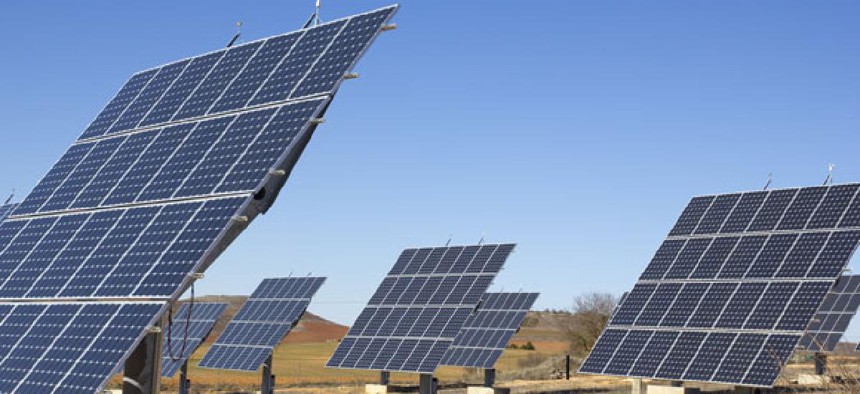All of the U.S. Energy Capacity Added in March Was Solar — 44 Megawatts

Shutterstock.com
Renewable energy was 82% of first quarter new capacity.
For all the talk of a natural gas boom, it takes time to build multibillion-dollar power plants to take advantage of the current glut of cheap fuel. Case in point: In March, the US added a whopping—wait for it—44 megawatts (MW) of new electricity generating capacity, according to the Federal Energy Regulatory Commission, or FERC.
That’s enough to keep espresso makers humming in about 30,000 American homes. Not exactly China-scale. But here’s what’s really interesting about that number: March marked the first time that 100 percent of new generating capacity in the US came from photovoltaic, or solar, power plants. (FERC doesn’t count the electricity generated by solar panels installed on residential rooftops.)
The solar projects FERC does count ranged from a 1.3 MW solar installation at a North Carolina science center to a 26 MW power station built by NRG Solar in the desert east of San Diego.
March may just have been an off month for power plant construction. Between January and March, the US added a total of 1,880 MW of new electricity generating capacity. Even so, renewable energy projects—wind, solar and biomass—accounted for 82 percent of new capacity in the first quarter of the year, and solar alone chipped in nearly 30 percent of the additional power. Natural gas power plants, on the other hand, added just 340MW, or 18 percent, of new capacity. And coal? Zip. Zero. Nada.





